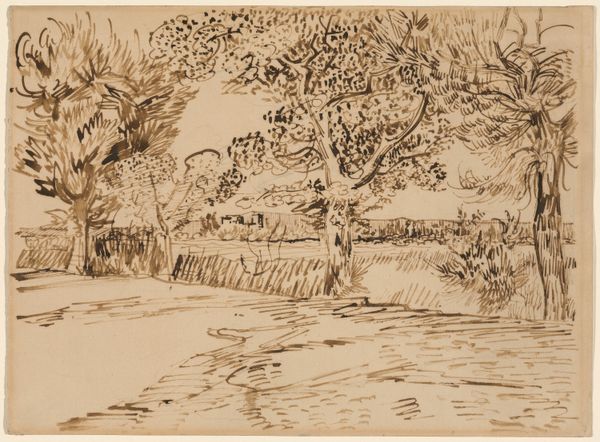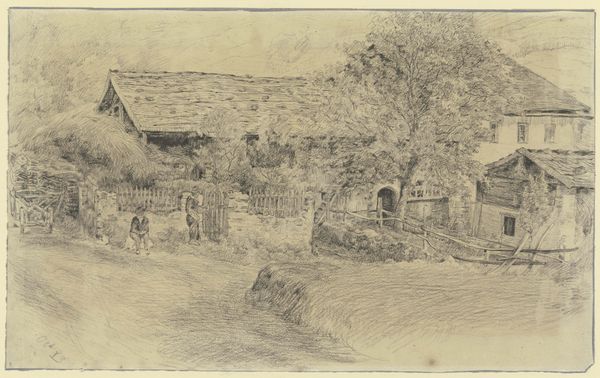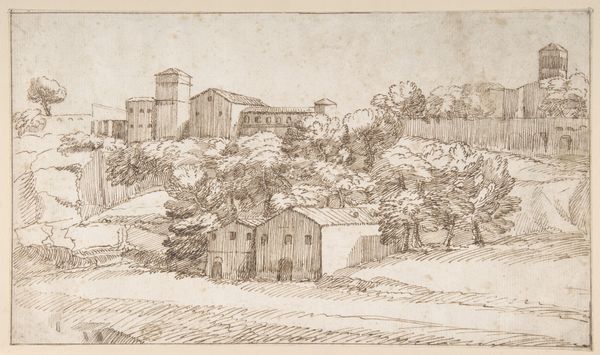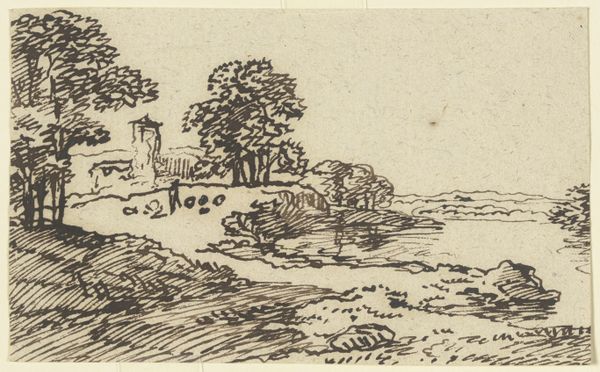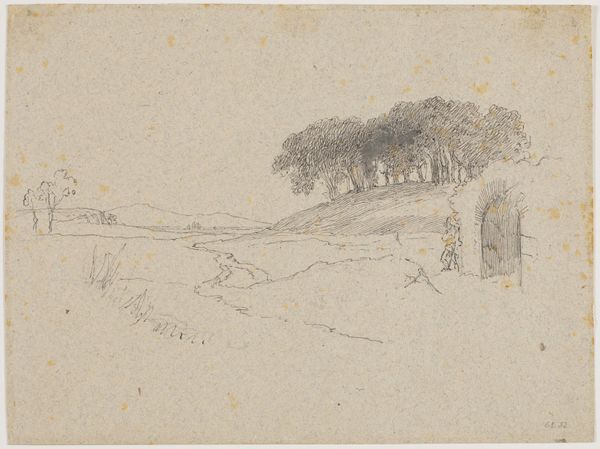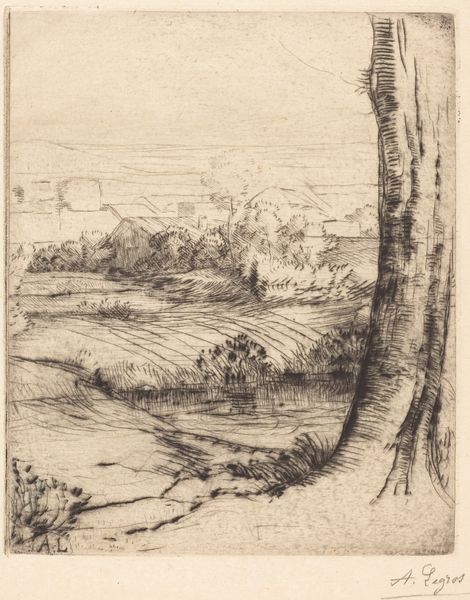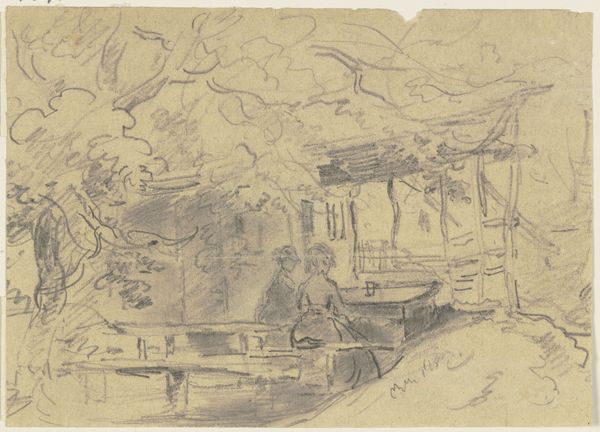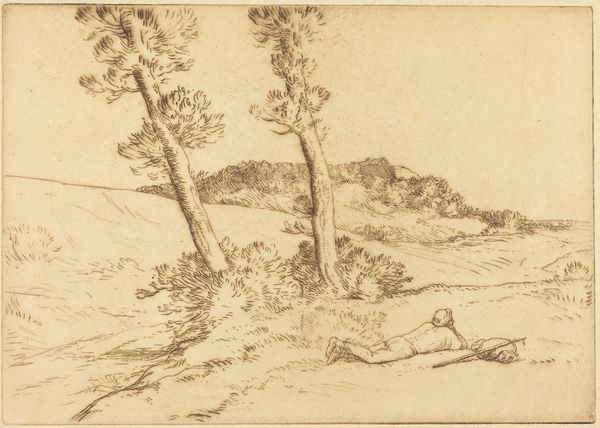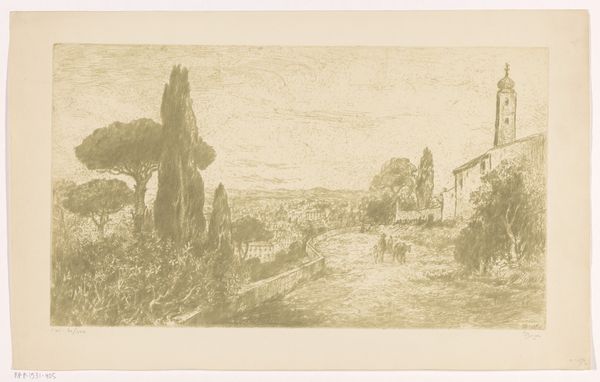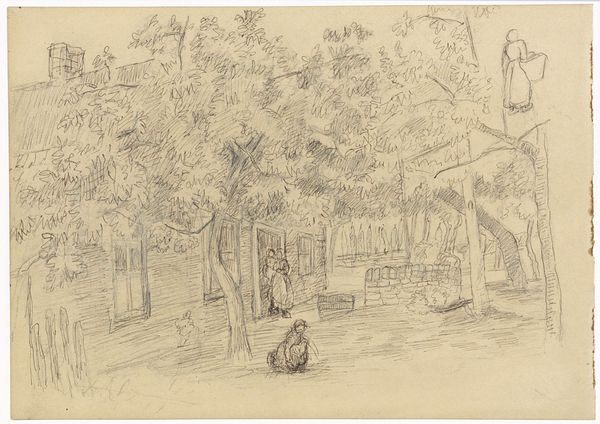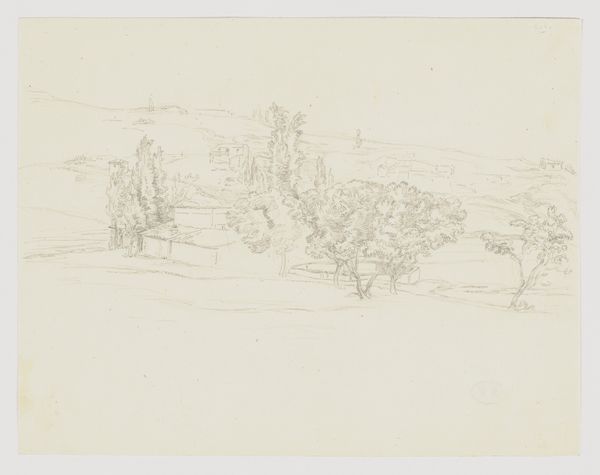
Rocky landscape with buildings and a shepherd with his flock 1500 - 1510
0:00
0:00
drawing, ink
#
drawing
#
ink painting
#
landscape
#
etching
#
charcoal drawing
#
figuration
#
11_renaissance
#
ink
#
line
#
italian-renaissance
Dimensions: 128 mm (height) x 274 mm (width) (bladmaal)
Curator: Editor: This is an ink drawing called "Rocky landscape with buildings and a shepherd with his flock," dating from around 1500 to 1510, by an anonymous artist. The details are incredible; I can almost feel the ruggedness of the rocks. What social realities do you think influenced its creation? Curator: That's a great question. I see this landscape through a lens of power and representation. During the Renaissance, the depiction of idealized landscapes often served to naturalize existing hierarchies. Who controlled the land? Who benefited from its resources? Note the shepherd – a romanticized figure often used to evoke a simpler, pastoral life. But whose lives were actually simple then? Editor: So you’re saying the idyllic image might be obscuring a more complex reality? Curator: Exactly. Consider the buildings perched atop the rocks. They suggest human dominance over the natural world, a recurring theme in Renaissance art tied to the rise of humanist philosophy. It's a power dynamic being asserted, but it's also relevant today. How do we negotiate our relationship with nature, and how are those negotiations shaped by inequalities? Editor: I hadn’t thought of it that way. I was focused on the beauty of the scenery and how it fits into art history's stylistic context! Curator: But isn't the stylistic context always inherently sociopolitical? Editor: I see what you mean. Now I'm looking at it with a totally new set of questions! It's almost as if the drawing is less about the scene itself and more about the system behind the scene. Curator: Precisely! We can appreciate the artistic skill while remaining critical of the underlying power structures it might reinforce, even unknowingly. It prompts conversations about land ownership and social hierarchy during the Renaissance, and echoes current challenges of environmental justice. Editor: I'll never look at another landscape the same way. Curator: Good. Our role is to keep these historical echoes reverberating and make sure that we create more just landscapes, metaphorically and physically, going forward.
Comments
No comments
Be the first to comment and join the conversation on the ultimate creative platform.
